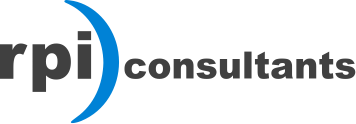Infor Reporting in CloudSuite: Invaluable Insights and Analytics

By: Ken Foley May 16, 2023
Organizations using CloudSuite can up-level their business intelligence using the many Infor reporting and analytics tools.
Whether you need real-time metrics on your supply chain operations, or a report on the previous month’s capital expenditures, Infor has a wealth of options for generating the insights you need. And with the latest edition of Birst, organizations can take their business intelligence a step further with visualizations that easily convey data trends and patterns—but more on that later.
Understanding your organization’s personas will be key to success in delivering quality data analytics as well. Examples of personas include staff accountants, C-suite executives, departmental managers, supply chain managers, buyers, payroll managers and HR directors. Each persona will require a different combination of tools and resources.
To help your business get the most out of CloudSuite, below we discuss the various reporting solutions available, as well as define several use cases that your organization can take advantage of, if it isn’t already.
Operational Reporting
The first type of reporting your organization may need to develop is operational, and it can be useful for just about every persona, though staff accountants, HR managers, and supply chain managers may find greater value in these types of reports.
As the name suggests, operational reports generate insights into the day-to-day workings of your business. These reports can provide visibility into inventory levels, purchase orders, and employee hours of service, among other functions.
These reports rely on Landmark, a centralized data management platform that provides access to information across the organization. Landmark tools include ListViews and GL Report Designer and allow users to create custom reports based on their specific needs. ListViews are attached directly to the live data and capture transactional information, such as medical supplies purchased from a particular vendor within a given time frame.
The challenge with ListViews is that because the data is so detailed, it can be difficult to sort through and make sense of on your own. GL Report Designer, on the other hand, can summarize operational data into easy-to-consume mediums, such as Excel workbooks and PDFs, which can be useful to managers and executives alike.
In addition to the Landmark source systems tools, organizations can create operational reports using HR Talent Analytics, which also captures transactional information but on a more ad-hoc basis. Staff can leverage HR Talent Analytics to review employee demographic details, as well as payroll information and budgeting.
Operational reports range in frequency, but due to their contents, typically refresh daily, though depending on the size of the report can update much quicker. Staff coordinators, managers, and other business users involved with operations can quickly create reports and collect insights regarding the performance of their respective practices.
Below are some operational use cases you can solve for by leveraging Infor reporting and analytic tools:
- Inventory status: If you need visibility into your inventory levels and how long items have been in stock, for example, you can easily set up recurring reports that track item shelf-time, which can assist with identifying the right time to place another order. Creating inventory status reports essentially helps your supply chain managers optimize levels and avoid stockouts.
- Payroll monitoring: Need insights regarding employee compensation and demographic? Using Infor’s HR Talent Analytics, managers can quickly create reports that monitor these details. With this level of reporting, users can also effectively track compliance with various employment laws. Beyond compliance, payroll reports can help with monitoring project budgets. If your business has allocated $25,000 a month for part-time staff assisting with seasonal supply deliveries, for example, you’ll want visibility into if you’re adhering to that budget.
- Purchase orders: Healthcare organizations typically partner with several vendors to obtain various medical supplies. With CSF Analytics, powered by Birst, your procurement managers can track purchase orders, delivery times, and vendor performance. As a result, they can identify areas that need improvement so that they can further optimize the procurement process.
Financial Reporting
Infor’s reporting tools and analytics can also help with a variety of financial needs, including measuring year-over-year growth. In addition to financial performance, this level of reporting can assist a great deal in demonstrating compliance with various accounting standards and regulations.
Using tools such as Application Studio, Enterprise Performance Management (EPM), and most recently GL Report Designer, organizations can create reports on financial performance, including revenue, quarterly expenses, and profitability.
The key to maximizing the efficiency of the finance and supply chain management reporting capabilities is identifying your organization’s data consumer “personas.” It’s for these reasons that this type of reporting is best suited for C-suite executives, board members, auditors, and controllers. Due to financial close requirements and auditing, reporting typically refreshes monthly or annually but can also have “push-button” refresh.
Some examples of how organizations can leverage Infor reporting to satisfy financial needs include:
- Income statements: Say your business needs to provide a summary of its revenue, expenses, and net income for a specific period. Utilizing Infor’s Application Studio, you can develop custom reports for tracking financial performance and identify processes that are not generating the return you forecasted.
- Balance sheets: If your organization needs to compare asset costs year-over-year or month-over-month, you can do so with Infor’s comparative balance sheets. These reports provide a snapshot of your assets, liabilities, and equity at a specific point in time. Run these as frequently as necessary to evaluate your financial health so you in turn can make strategic decisions.
- Cash flow statements: With financial reporting you can discover your organization’s cash inflows and outflows. Need to report on your monthly balance? Create custom cash flow statements to monitor liquidity so that you can make informed choices about cash management.
Analytics Dashboards
To elevate your various reporting needs, your organization can create active dashboards that display desired business KPIs and analytics in an easy-to-view, digestible format.
Analytics dashboards in the Infor system can be built using Birst, a cloud-based business intelligence platform that provides advanced data visualization capabilities.
With Infor’s Birst, users can create intuitive dashboards that highlight data patterns and trends, bringing your data to life through visually compelling and interactive content.
What’s more, the Birst platform can be tailored for different personas. C-suite professionals will likely have different interests when it comes to revenue performance over the last 12 months, in comparison to finance managers. The level of detail required for each audience can be configured to suit the desired needs.
In addition to creating user-friendly reports, Birst frees up valuable people resources by automating the reporting process. According to Infor, “Birst automates IT-centric tasks allowing customers to spend 25% to 35% more of their time on value-added activities, such as producing new reports, dashboards, and rich analytics applications.”
Birst dashboards ultimately provide insights into operational and financial performance and allow executives and managers to make data-driven decisions with confidence. Like financial reports, analytic dashboards typically update monthly or quarterly, but can be customized to meet your exact needs.
Examples of KPIs that can be visualized with Infor Birst dashboards include:
- Sales performance: At a moment’s notice, view sales revenue, product margins, and pipeline. With this level of oversight, sales managers can track performance, more accurately forecast year-end revenue targets, and make informed decisions about resource allocation.
- HR KPIs: If your organization is facing challenges with recruitment and retention due to economic trends or the Great Resignation, it can be helpful to quantify those metrics. With Birst reporting dashboards, you can review insights regarding employee turnover, absenteeism, and performance in seconds, empowering HR managers to improve and optimize workforce management.
- Supply chain performance: Say one of your suppliers is falling behind with delivering business supplies each month. It may be difficult to know just how much these delays are impacting your business. By creating custom supply chain dashboards, you can quickly identify your inventory levels, order fulfillment, and supplier performance. With these real-time insights, managers can more effectively monitor inventory levels, vendor reliability, and overall supply chain processes.
Benefits of Infor Reporting Options
By now, it’s clear that Infor’s reporting and analytics tools have a wide variety of use cases and can help organizations understand performance in a multitude of business areas, which in turn facilitates business growth among other desired goals.
Beyond visibility into business functions, organizations can experience a wealth of additional benefits using Infor reporting and analytic tools, including:
- Quick, reliable decision-making: By providing real-time insights into operational and financial performance, Infor reporting options enable organizations to make informed decisions that are grounded in data rather than guesswork. With reliable data readily available, businesses can quicky identify areas where performance is lacking and take action to improve the situation, optimize their processes, and stay ahead of the competition.
- Increased efficiency: Infor’s operational reporting tools allow organizations to monitor their business processes quickly. When your business can act confidently on accurate data sources, it can operate with greater efficiency. By optimizing processes such as procurement, inventory management, and payroll, organizations can also reduce costs and increase profitability.
- Enhanced collaboration: With easily accessible reporting and analytics tools, teams across the organization can self-serve to get the information they need, when they need it. This not only facilitates better collaboration and communication across the organization, but it also helps break down silos and empowers teams to work towards common goals more effectively.
Making The Most of Data Analytics and Reporting
Whether your reporting needs are simple or advanced, Infor has various tools to help you better understand your organization’s strengths and weaknesses.
And while these tools are easily accessible within Infor CloudSuite, creating customized reports that run when you want them to can be a rather time-intensive and challenging project. Even Infor-delivered reporting may need to be customized to meet your unique business needs. When moving to the cloud, whether from an on-premise Infor solution or another vendor, those core reports will need to be recreated.
For assistance identifying which reporting tools your organization needs and getting them set up, contact RPI Consultants. With over 20 years of expertise working with Lawson legacy, and Infor ERP systems, we can help you get the most out of your office back-end infrastructure. No matter if your Infor implementation is net-new, or a conversion, we can ensure you’re able interpret your data in a meaningful way.
To see how RPI can help you optimize your Infor reporting experience using various data and analytics tools like Birst, contact us below. We can set up a discovery workshop to develop a business intelligence strategy, roadmap, and plan that not only achieves long-term goals, but delivers the value you need, when you need it.


Follow us online for faster access to announcements, knowledge base updates, and upcoming events!
Software Services & Solutions
RPI Consultants Software Partners, Capabilities, & Experience
Contact Us to Get Started
The RPI Consultants Blog
News, Announcements, Celebrations, & Upcoming Events
News & Announcements
Upcoming Events






